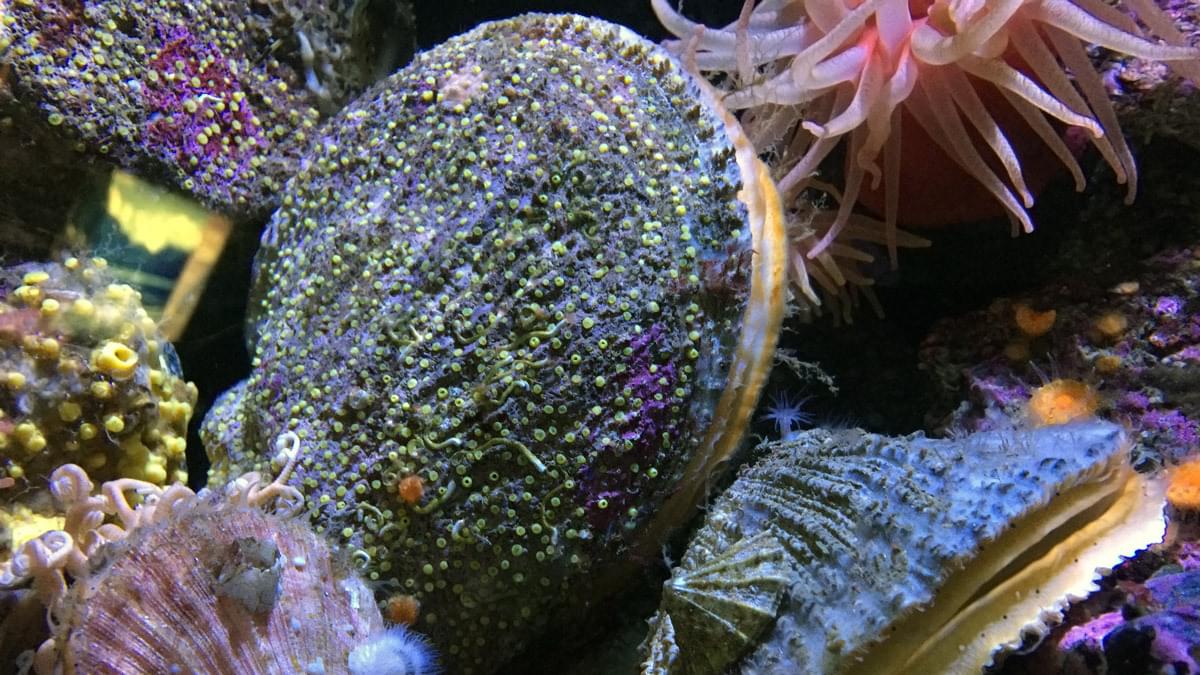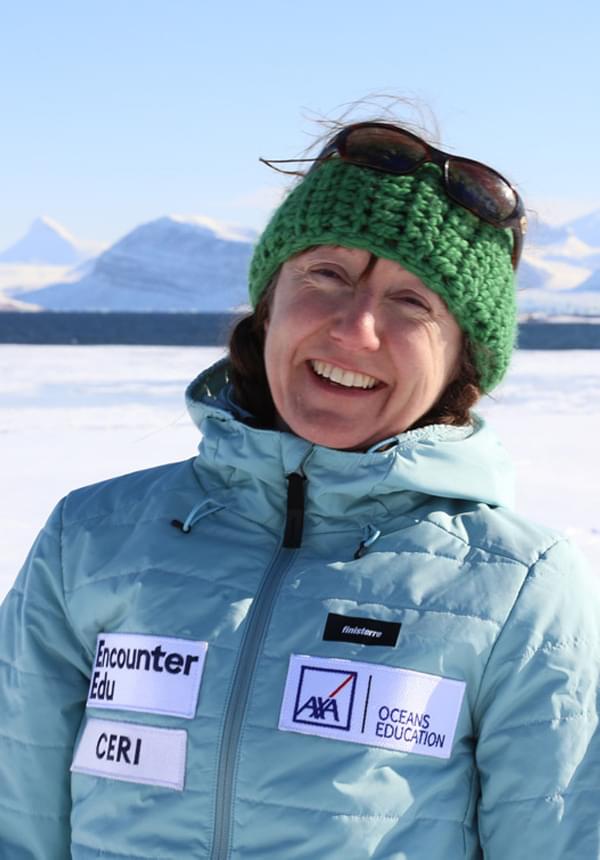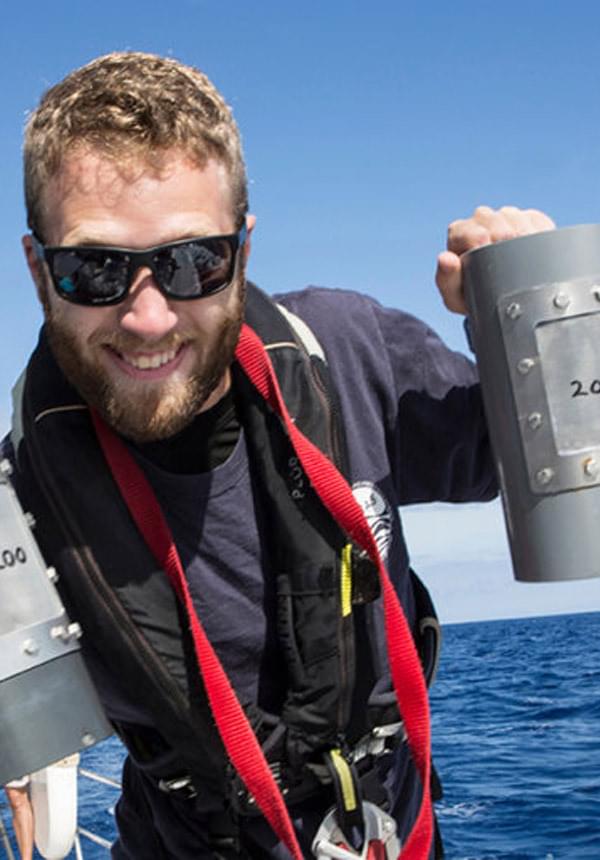
Seabed safari
To celebrate British Science Week 2023, we are taking a dive around Britain to find out the amazing life that lives on Britain’s seabed. We join Dr Ceri Lewis and Dr Adam Porter from the University of Exeter to find out about the range of amazing life that inhabits the seafloor.
This lesson focuses on the identification, classification, and adaptation of our marine life, both those species that live on the seabed, and those that burrow into the seabed. Ceri and Adam will have some of the species in the lab to look more closely at some of the characteristics that make these animals suited to their seabed habitats.
Learning objectives
- Identification and classification of invertebrates
- How animals are adapted to their environment
- Compare animals and plants in the local environment to those in less well-known environments such as the ocean
Preparation
This is a standalone lesson to celebrate British Science Week 2023. No specific preparation is needed but teachers may wish to review prior learning on identification and classification and the types of invertebrates found in the local environments.
There are two student sheets to choose from. The Seabed safari student sheet focuses on spotting the different life during the live lesson, and the Seabed adaptations student sheet allows students to think about how life on the seabed has adapted to this habitat.
If you have never joined a live lesson before, visit the support centre, where you can find a range of technical and educational information.
Questions generated by your class can be submitted via the interaction app that will appear on this lesson page once you have booked the lesson.
Lesson steps
1. Introduction (5 minutes)
We welcome classes to this live lesson for British Science Week 2023. This is also a chance to go over the learning for the lesson and cover digital housekeeping and meet our speaker.
2. What is the seabed and how big is Britain’s? (5 minutes)
This section of the live lesson looks at the size of Britain’s seabed and the different types of habitat that are found there. This emphasises that the ocean is not just one habitat, but many.
3. What animals are found on the seabed? (10 mins)
We find out about some of the species that live on the seabed, and identify the habitats to which they are most suited and how they can be classified. Students can complete the student sheet as Ceri and Adam guides classes through the different animals.
4. How are species adapted to life on the seabed and in the sediment? (10 mins)
Back in the lab, we look more closely at some of the characteristics that make these animals suited to their environment, and introduce some activities that classes may enjoy as follow-on activities.
5. Q&A (15 minutes)
This is a chance for children to ask any questions they have about the amazing sea life surrounding Britain.
Further ideas
There will be an additional student sheet for students to think about the ultimate seabed animal, and an activity to observe the behaviour of earthworms and link this to the importance of worms in land and ocean habitats.
Speakers

Dr Ceri Lewis
Associate Professor, Exeter University, UK

Dr Adam Porter
Research Fellow, University of Exeter
Brought to you by

In partnership with



Teach the goals
Seabed safari
To celebrate British Science Week 2023, we are taking a dive around Britain to find out the amazing life that lives on Britain’s seabed. We join Dr Ceri Lewis and Dr Adam Porter from the University of Exeter to find out about the range of amazing life that inhabits the seafloor.
This lesson focuses on the identification, classification, and adaptation of our marine life, both those species that live on the seabed, and those that burrow into the seabed. Ceri and Adam will have some of the species in the lab to look more closely at some of the characteristics that make these animals suited to their seabed habitats.
Learning objectives
- Identification and classification of invertebrates
- How animals are adapted to their environment
- Compare animals and plants in the local environment to those in less well-known environments such as the ocean
Preparation
This is a standalone lesson to celebrate British Science Week 2023. No specific preparation is needed but teachers may wish to review prior learning on identification and classification and the types of invertebrates found in the local environments.
There are two student sheets to choose from. The Seabed safari student sheet focuses on spotting the different life during the live lesson, and the Seabed adaptations student sheet allows students to think about how life on the seabed has adapted to this habitat.
If you have never joined a live lesson before, visit the support centre, where you can find a range of technical and educational information.
Questions generated by your class can be submitted via the interaction app that will appear on this lesson page once you have booked the lesson.
Lesson steps
1. Introduction (5 minutes)
We welcome classes to this live lesson for British Science Week 2023. This is also a chance to go over the learning for the lesson and cover digital housekeeping and meet our speaker.
2. What is the seabed and how big is Britain’s? (5 minutes)
This section of the live lesson looks at the size of Britain’s seabed and the different types of habitat that are found there. This emphasises that the ocean is not just one habitat, but many.
3. What animals are found on the seabed? (10 mins)
We find out about some of the species that live on the seabed, and identify the habitats to which they are most suited and how they can be classified. Students can complete the student sheet as Ceri and Adam guides classes through the different animals.
4. How are species adapted to life on the seabed and in the sediment? (10 mins)
Back in the lab, we look more closely at some of the characteristics that make these animals suited to their environment, and introduce some activities that classes may enjoy as follow-on activities.
5. Q&A (15 minutes)
This is a chance for children to ask any questions they have about the amazing sea life surrounding Britain.
Further ideas
There will be an additional student sheet for students to think about the ultimate seabed animal, and an activity to observe the behaviour of earthworms and link this to the importance of worms in land and ocean habitats.
Speakers

Dr Ceri Lewis
Associate Professor, Exeter University, UK

Dr Adam Porter
Research Fellow, University of Exeter
Brought to you by

In partnership with



Teach the goals
